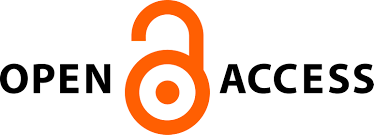Kimlin Ashing
Center of Community Alliance for Research and Education, Department of Population Sciences, City of Hope National Medical Center, Duarte, CA, United States.
Mayra Serrano
Center of Community Alliance for Research and Education, Department of Population Sciences, City of Hope National Medical Center, Duarte, CA, United States
Marisela Garcia
Katty Nerio
Center of Community Alliance for Research and Education, Department of Population Sciences, City of Hope National Medical Center, Duarte, CA, United States
Alejandro Fernandez
Center of Community Alliance for Research and Education, Department of Population Sciences, City of Hope National Medical Center, Duarte, CA, United States
Margaret Martinez
ChapCare, 455 W. Montana Street, Pasadena, CA 91103, United States
Rita Singhal
Los Angeles County Department of Public Health, Office of Women’s Health, 3400 Aerojet Avenue, El Monte, CA, United Sates
Andrette Ward
ChapCare, 455 W. Montana Street, Pasadena, CA 91103, United States
Aneesah Robinson
ChapCare, 455 W. Montana Street, Pasadena, CA 91103, United States
Karen Tinsley
ChapCare, 455 W. Montana Street, Pasadena, CA 91103, United States
Camille Ragin
Fox Chase Cancer Center, 333 Cottman Avenue, Philadelphia, PA, United States
Marcella Nunez-smith
Yale School of Medicine, P.OBox 208088, IE-61 SHM, New Haven, CT, United States
Rebecca Perkins
Boston University School of Medicine, 72 East Concord St. Boston, MA, United States
Gerard Antoine
Caribbean Medical Providers Practicing Abroad, Kailua, Hawaii, United States
Abstract
We aimed to identify practices and barriers affecting HPV vaccination (HPVV) within immigrant dense communities. Interviews were conducted with multisectoral stakeholders including safety-net clinic personnel, parents, and members of the HPVV community advisory council. The results underscored poignant issues relevant to immigrant communities at local and national levels: 1) Immigrant inclusive, public health and health system interventions to increase awareness of health facilities safe zone for immigrant children tied to HPVV campaigns. 2) Clear and strong provider HPVV recommendation approaches that are culturally and linguistically responsive. 3) Provider must be aware of his/her own biases and attend to the cultural beliefs and practices of parents for a more genuine and effective facilitation of vaccination. Providers, in particular, emphasized examining the provider cultural continuance relevant to HPVV clinical encounter and provider-patient relationship, as well as ongoing provider education and communication for increased HPVV among immigrant providers. At the national and local levels, we must ensure health facility safe-zone for immigrant children to obtain low/no cost healthcare including HPVV to attain the Healthy People 2020 goals of 85% HPVV.



